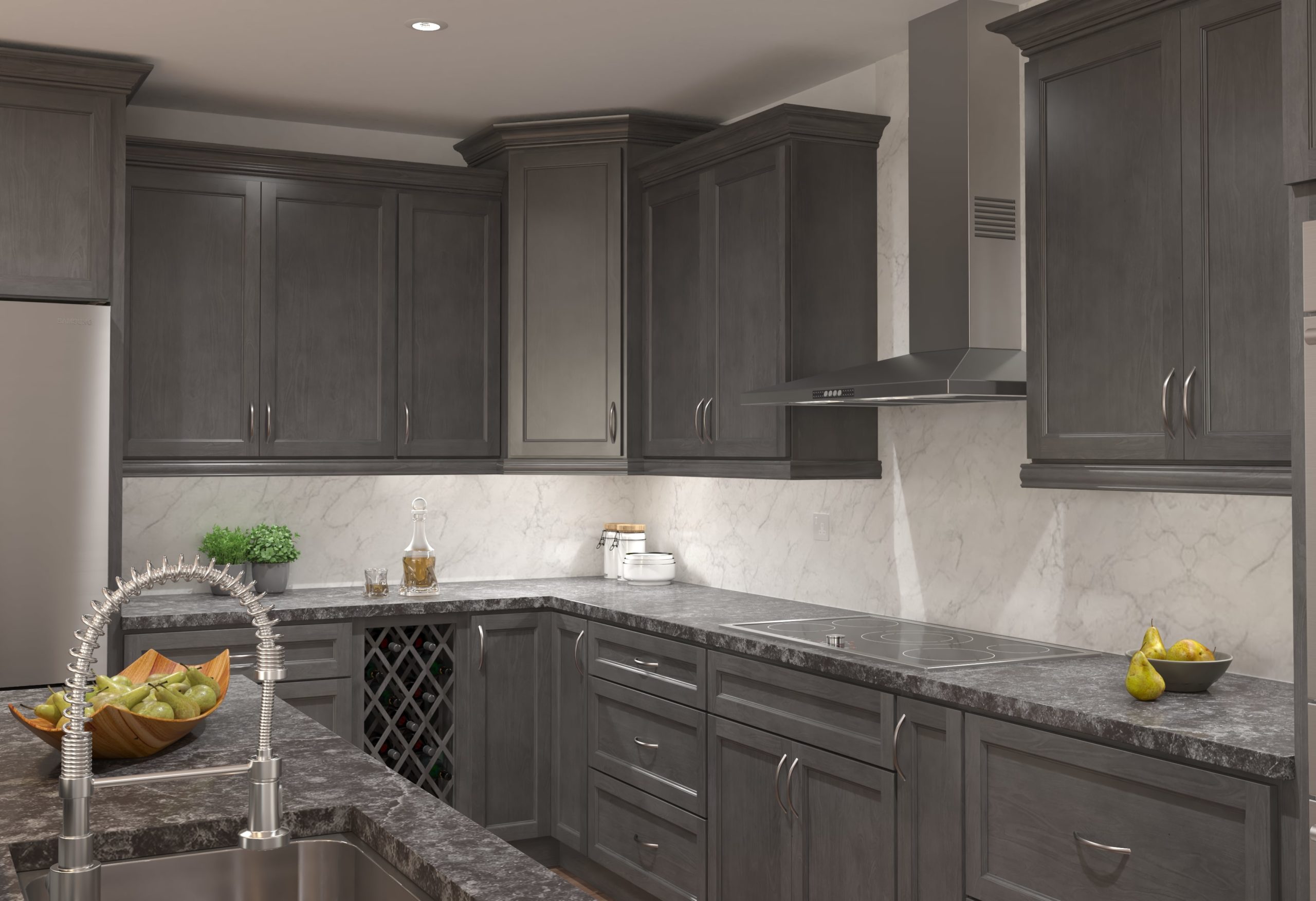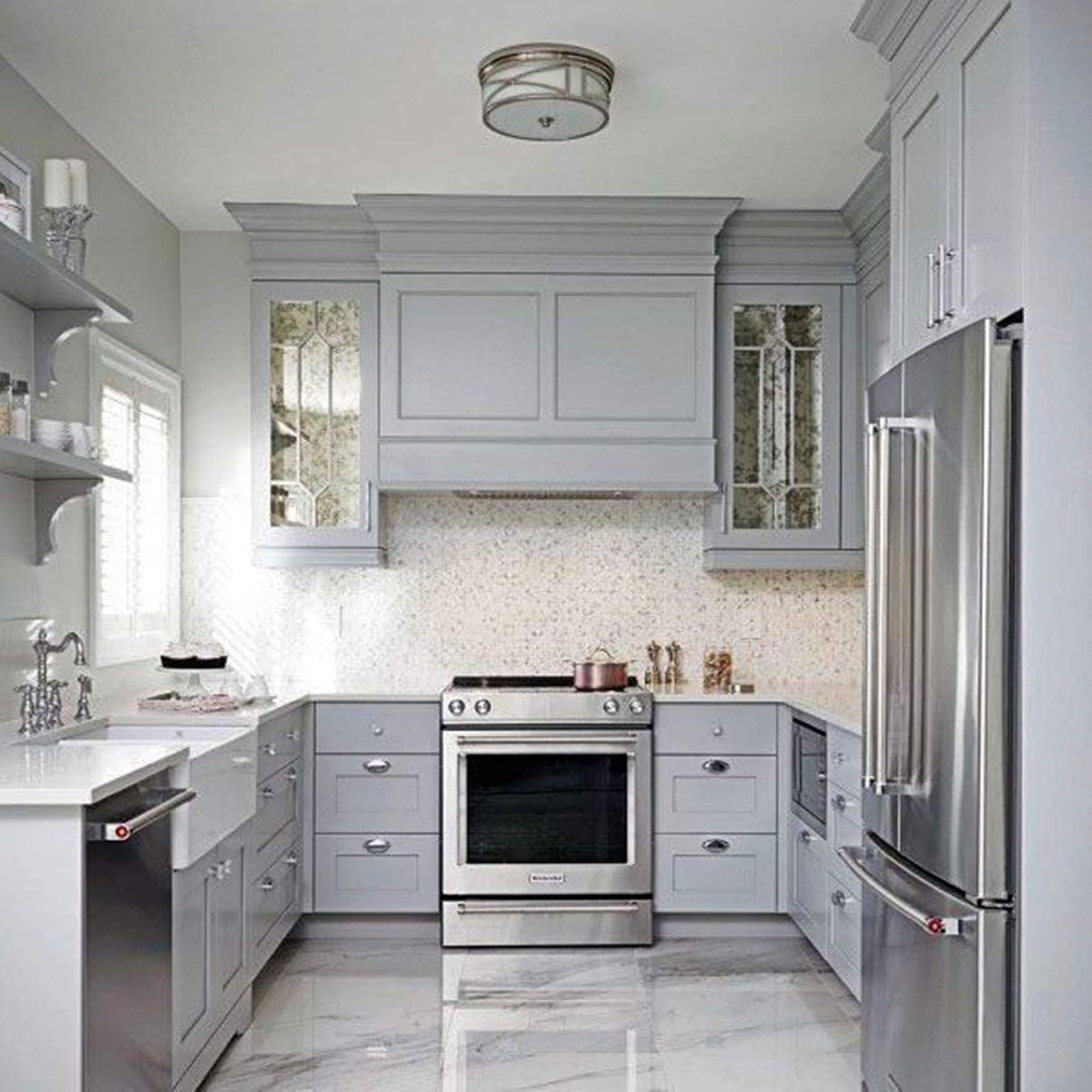DIY Gray Kitchen Cabinet Painting Techniques

Transforming your kitchen with a fresh coat of gray paint on your cabinets can dramatically update the space. This process, while achievable as a DIY project, requires careful planning and execution to achieve a professional-looking finish. Understanding the different painting methods, preparation steps, and paint selection is crucial for success.
Painting Methods for Gray Kitchen Cabinets
Choosing the right painting method significantly impacts the final result. Each method offers unique advantages and disadvantages. Consider your skill level, time constraints, and the size of your project when making your decision.
| Method | Pros | Cons | Best For |
|---|---|---|---|
| Brush | Precise control, good for detail work, relatively inexpensive. | Labor-intensive, can leave brushstrokes if not applied carefully, requires more time. | Small projects, intricate details, beginners comfortable with a slower pace. |
| Roller | Faster coverage than brushing, relatively inexpensive. | Can leave roller marks if not applied properly, may not be suitable for detailed areas. | Large, flat surfaces, experienced DIYers who can achieve an even coat. |
| Sprayer | Fastest coverage, smoothest finish, ideal for even coats. | Requires more specialized equipment, can be messy if not used properly, potential for overspray. | Large projects, experienced DIYers comfortable with spray equipment, achieving a professional finish. |
Cabinet Preparation for Painting
Thorough preparation is paramount for a long-lasting, high-quality finish. Skipping these steps can lead to peeling paint and an uneven appearance. The following steps are essential for success.
- Remove Hardware: Carefully remove all cabinet doors, drawers, knobs, and hinges. Label each piece to ensure easy reassembly.
- Clean Cabinets: Use a degreaser to thoroughly clean all surfaces, removing grease, grime, and old wax. Rinse thoroughly and allow to dry completely.
- Sanding: Lightly sand all surfaces with fine-grit sandpaper (180-220 grit) to create a smooth surface for better paint adhesion. Wipe away sanding dust with a tack cloth.
- Prime Cabinets: Apply a high-quality primer designed for cabinets. This will seal the wood, improve paint adhesion, and ensure a uniform color. Allow the primer to dry completely according to the manufacturer’s instructions.
Achieving a Smooth, Even Finish
Several techniques contribute to a flawless finish. Addressing common issues proactively minimizes rework and frustration.
- Thin Coats: Apply multiple thin coats of paint rather than one thick coat. This prevents drips, sags, and ensures even coverage.
- Consistent Technique: Maintain consistent pressure and speed when applying paint, whether using a brush, roller, or sprayer. Overlapping strokes slightly will help prevent visible seams.
- Proper Drying Time: Allow sufficient drying time between coats to prevent lifting or smudging. Refer to the paint manufacturer’s instructions for drying times.
- Light Sanding Between Coats: Lightly sand between coats with very fine-grit sandpaper (320 grit or higher) to smooth out any imperfections before applying the next coat. Remove dust with a tack cloth.
Choosing the Right Paint and Sheen
The type and sheen of paint significantly affect the final look and durability of your cabinets. Kitchen cabinets require a paint that can withstand daily wear and tear.
- Paint Type: Choose a high-quality acrylic-alkyd or acrylic-urethane paint formulated for cabinets. These paints offer excellent durability and washability.
- Sheen: A semi-gloss or satin sheen is ideal for kitchen cabinets. These sheens are easy to clean and resist scratches and stains better than matte or eggshell finishes. A higher gloss sheen will show imperfections more readily.
- Color Selection: Numerous shades of gray exist, ranging from cool to warm tones. Consider your kitchen’s lighting and overall style when choosing your specific gray. Test paint samples on a cabinet door before committing to a large purchase.
Transforming Your Kitchen with Gray Cabinets: Diy Gray Kitchen Cabinets

Gray kitchen cabinets offer a versatile backdrop for a multitude of design styles, allowing for both classic elegance and modern sophistication. The right combination of countertops, backsplash, and flooring can elevate your kitchen from drab to fab, creating a space that reflects your personal style and enhances your home’s value. Let’s explore some design possibilities.
Three Kitchen Design Concepts Featuring Gray Cabinets, Diy gray kitchen cabinets
Choosing the right design elements to complement your gray cabinets is crucial for achieving your desired aesthetic. Here are three distinct concepts to inspire your kitchen transformation:
Modern Gray Kitchen
This design prioritizes clean lines, minimalist aesthetics, and a sense of spaciousness. Imagine sleek, matte gray cabinets paired with a crisp white quartz countertop. The countertop’s seamless surface and subtle veining create a sophisticated contrast against the cabinets. A simple, light-colored subway tile backsplash adds a touch of texture without overwhelming the minimalist feel. Wide-plank, light gray engineered wood flooring completes the look, maintaining a consistent color palette while adding warmth. The overall effect is one of airy sophistication and modern functionality.
Farmhouse Gray Kitchen
For a rustic-chic feel, consider a warm gray cabinet color, perhaps a slightly textured finish, paired with a butcher block countertop. The rich, natural wood of the butcher block provides a beautiful contrast to the gray, adding warmth and character. A white or cream subway tile backsplash, possibly with a subtle pattern or accent tile, enhances the farmhouse aesthetic. A reclaimed wood or distressed white oak floor adds to the rustic charm, grounding the design and creating a welcoming atmosphere. This style is cozy, inviting, and perfect for those who appreciate traditional details with a modern twist.
Traditional Gray Kitchen
This style embraces elegance and timeless appeal. Darker gray cabinets, perhaps with a slightly glossy finish, are the perfect foundation. A granite countertop, with its inherent variations in color and texture, adds depth and sophistication. Consider a classic marble or patterned tile backsplash for a touch of luxurious detail. Hardwood flooring in a medium-toned wood, such as cherry or walnut, complements the richness of the cabinets and countertops, completing a refined and enduring design. This design offers a classic feel with a modern twist, emphasizing both sophistication and durability.
Impact of Different Countertop Materials on Gray Kitchens
The countertop material significantly impacts the overall look and feel of a gray kitchen. Each material offers unique textural and stylistic qualities:
Diy gray kitchen cabinets – Granite: Granite countertops bring a sense of natural elegance. Their inherent variations in color and veining add depth and visual interest, complementing gray cabinets beautifully. A lighter granite can brighten the space, while a darker granite creates a more dramatic effect. The textured surface provides a tactile element, offering a sophisticated contrast to the smooth finish of many gray cabinets.
Quartz: Quartz offers a sleek, modern aesthetic. Its seamless surface and consistent color are ideal for a minimalist or contemporary design. Quartz is available in a wide range of colors and patterns, allowing for customization to perfectly match your gray cabinets. The non-porous nature of quartz makes it a practical and low-maintenance choice.
Butcher Block: Butcher block countertops introduce a rustic, warm feel. The natural wood grain adds texture and character, creating a striking contrast to the smooth surface of gray cabinets. Butcher block offers a durable and sustainable option, perfect for a farmhouse or traditional style kitchen. Regular oiling is required to maintain its beauty and longevity.
Incorporating Various Backsplash Options
The backsplash plays a significant role in tying together the design elements of your gray kitchen. Different materials and patterns create distinct effects:
Tile: Tile offers endless possibilities for customization. Subway tile, in various colors and patterns, provides a classic and versatile option. Larger format tiles create a more modern and minimalist feel, while smaller tiles offer a more traditional look. Mosaic tiles can add a touch of artistry and personality.
Subway Tile: Subway tile, a timeless classic, remains a popular choice for its versatility. Its clean lines and simple design complement both modern and traditional kitchens. The choice of color, grout, and layout can drastically alter the overall aesthetic. White subway tile brightens the space, while darker colors create a more dramatic look.
Stone: Natural stone backsplashes, such as marble or slate, bring a touch of luxury and sophistication. Their unique veining and textures add depth and visual interest. Marble, with its elegant veining, complements gray cabinets beautifully, creating a refined and timeless look. Slate, with its earthy tones and rugged texture, adds a rustic touch.
